Solar Storms of 2024: How Many Storms Were There And What To Expect
30th Nov 2022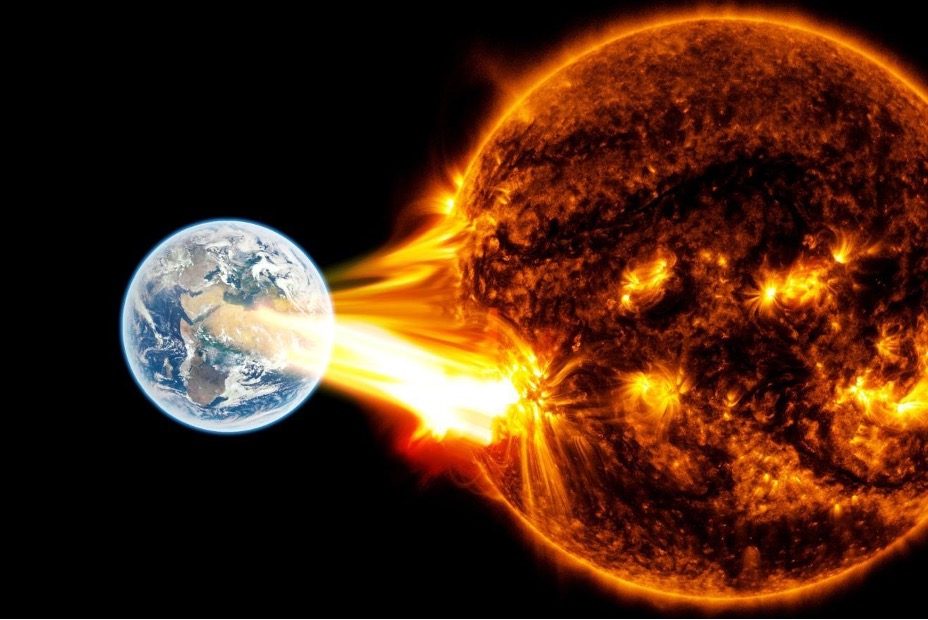
When the Sun is restless, we feel it too. The stronger the processes in the Sun, the greater their impact on weather-dependent people, communications, satellite geolocation, radio, and even electrical networks. And even though such a storm might not bring down trees or sink ships, it can cause serious damage to our society.
In this article, we will look into the nature of the solar storm, its dangers, how many solar storms were there in previous years and what awaits us in 2024.
Nature & Types Of Solar Storms
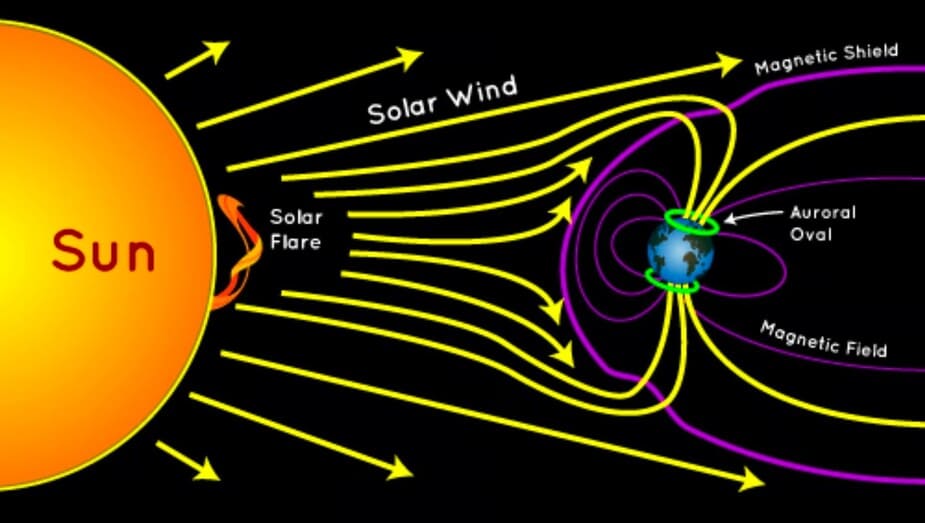
A solar storm is a disturbance on the Sun caused by huge energy releases that can go beyond the heliosphere and affect our planet’s magnetosphere. What exactly are we talking about?
- Solar flares near the surface and sunspots. Often co-occurring with a coronal mass ejection with a slight increase in radiation.
- Coronal mass ejection (CME) ─ plasma and accompanying magnetic field due to prominence eruptions
- A cosmic radiation storm is a solar proton event (SPE) associated with the acceleration of solar particles due to a CME.
During each solar storm, energy is released with a power a hundred thousand times greater than the entire world’s nuclear arsenal. The difference is that this energy is “scattered” over a huge area in space and not focused on one place; otherwise, the consequences for objects standing in their way would be catastrophic. According to the peak flow, which is measured in Watts per square meter, solar flares are classified as A, B, C, M or X. X-class solar flares are the largest and most powerful.
When one of the flashes goes towards our planet, its magnetic field can merge with the Earth’s magnetic field. Depending on the storm category, disturbances in the Earth’s geomagnetic field can last from several hours to several days and vary in intensity, measured by the G-index — a five-point scale of strength. Magnetic storms are divided into levels from G1 (weak storms) to G5 (powerful storms) due to this scale.
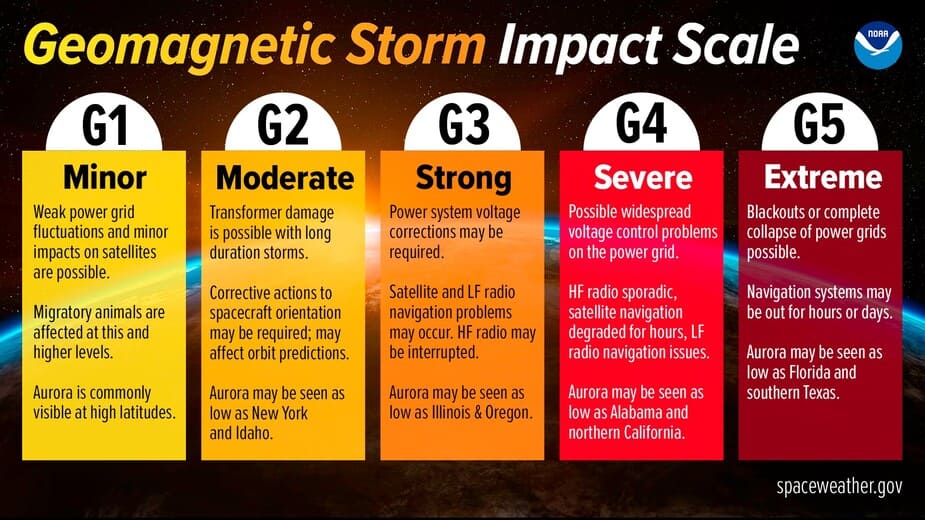
The scale for measuring geomagnetic activity from 1 to 9 according to the Kp index is also used. G-index corresponds to Kp minus 4; that is, G1 is equal to Kp5, G2 is Kp6, G5 is Kp9.
Impact of Solar Storms
Geomagnetic waves can disrupt power systems, radio communications, and geolocation systems and throw satellites off course. They also affect the well-being of people with poor health, cardiovascular diseases, and musculoskeletal system problems. According to statistics, about 70% of hypertensive crises, heart attacks and strokes occur during strong solar storms.
Here are the most common symptoms that appear at times of high geomagnetic activity:
- headache;
- sudden swings in blood pressure;
- dizziness;
- rapid heart pulse;
- laboured breathing;
- sleep disturbance;
- absent-mindedness, irritability, anxiety;
- fatigue;
- joint pain.
Unfortunately, people cannot protect themselves from the effects of a solar storm, but one can prepare for it. During this time, doctors advise reducing physical activity, moderating the use of electrical appliances, drinking more clean water, eating light foods rich in vitamins and proteins, abstaining from alcohol, getting more rest, and avoiding stressful situations.
When Is The Next Solar Storm Coming in 2024
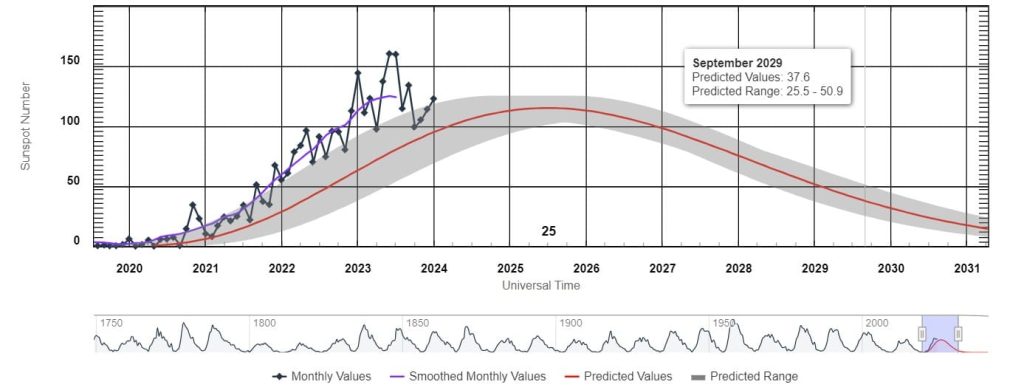
Once in about every 11 years, the Sun reaches its peak activity, when the number and intensity of flares increase significantly. This phenomenon is called the solar maximum. Scientists expected the nearest solar maximum in 2025-2026, but it seems that it began already in late 2023 and will last through 2024.
This is proven by a series of storms of G1 and G2 strength that hit the Earth between January 18 and 25. There is a decline in activity now, which promises to last until mid-February. But on February 18 and 19, weather-dependent people will, once again, need to stay on their guard. A storm of magnitude 5, according to the K-index, is expected.
We advise checking the forecast on the meteoagent website or mobile app to see what awaits us in 2024. The online forecast of solar storms and flares for 2024, provided by this resource, is calculated using satellite systems NOAA, TESIS, and international meteorological scientific laboratories around the world. Data is usually updated every 10 minutes, so you’ll always stay up to date.
Solar Storms Over The UK In 2023
2023 had a very quiet start. In the first half of January, the level of geomagnetic activity remained mainly at the level of 2–3 points according to the Kr index. The first G1 storms arrived on February 16, 18 and 27. And at the end of the month, a solar storm with a G2 force hit the Earth.
In March, peak solar activity occurred on the 15th, 16th, and 24th. But the storms did not exceed the G1 index. The strongest storms in spring 2023 took place on April 24 and May 8 (G3). May was also marked by several G1 storms.
The summer turned out to be unusually mild. There was only one G1 storm in mid-June and three more in the first ten days of August.
In autumn, slight geomagnetic activity was observed at the beginning and end of September (Kr5), as well as on November 6, 7, and 12. October went by quietly.
But in December, it all went loose. The last month of 2023 was marked by high activity at the Kr4 and G1-G3 levels, which occurred on December 1, 2, 17, 18, and 31.
Solar Storms over the UK in 2022
The beginning of the year went rather smoothly. A solar storm in March 2022 was not all that strong. After about 20 moderate solar flares, it lasted only three days at the end of the month and was classified as mild (at the peak of the G2 category).
April was the most generous for storms. During that month, were hit by a dozen solar storms. The most notable solar storm was recorded on 14th April, after a dead sunspot ejected a huge ball of plasma towards the Earth. Luckily, this G2 storm didn’t bring us much trouble. But it was possible to observe the northern lights in more southern latitudes than usual.
In May, a series of rather weak phenomena continued. Five sustained low-intensity storms did not significantly impact our infrastructure. The same pattern was observed during the summer months. Storms caused by M-class flares resulted in minor radio outages on the day side of the planet. There were no solar radiation storms during this period.
In early and mid-autumn, solar activity was not too intense. September passed quietly, with only two events in the middle and end of the month.
What was the strongest solar storm to hit Earth in 2022? The most notable storm, caused by X-class flares, was recorded on 2nd October. We got lucky this time as its strength was relatively low. At the end of October, several strong storms were noted, which also did not cause any damage.
Several moderate to severe events were predicted for November, peaking on 18 November. That day, a strong storm lasted almost 6 hours.
December greeted us with solar storms both at the beginning and at the end of the month. The hardest days for weather-sensitive people were on December 8, 26 and 29.

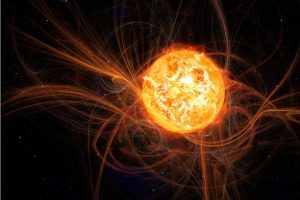



Thank you for your comment! It will be visible on the site after moderation.